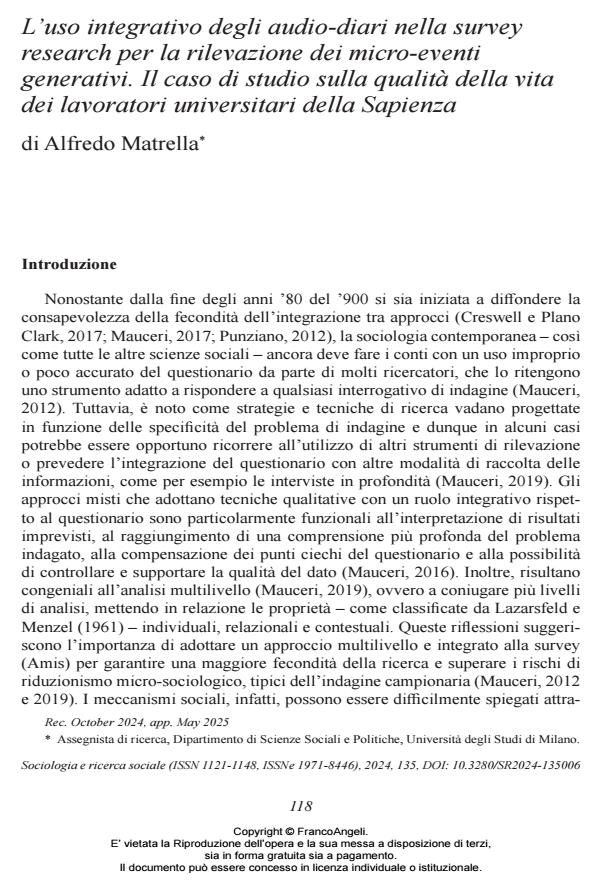L’uso integrativo degli audio-diari nella survey research per la rilevazione dei micro-eventi generativi. Il caso di studio sulla qualità della vita dei lavoratori universitari della Sapienza
Titolo Rivista SOCIOLOGIA E RICERCA SOCIALE
Autori/Curatori Alfredo Matrella
Anno di pubblicazione 2025 Fascicolo 2024/135
Lingua Italiano Numero pagine 21 P. 118-138 Dimensione file 277 KB
DOI 10.3280/SR2024-135006
Il DOI è il codice a barre della proprietà intellettuale: per saperne di più
clicca qui
Qui sotto puoi vedere in anteprima la prima pagina di questo articolo.
Se questo articolo ti interessa, lo puoi acquistare (e scaricare in formato pdf) seguendo le facili indicazioni per acquistare il download credit. Acquista Download Credits per scaricare questo Articolo in formato PDF

FrancoAngeli è membro della Publishers International Linking Association, Inc (PILA)associazione indipendente e non profit per facilitare (attraverso i servizi tecnologici implementati da CrossRef.org) l’accesso degli studiosi ai contenuti digitali nelle pubblicazioni professionali e scientifiche
This study explores the integration of survey research and audio diaries to investigate the quality of life among university staff, with particular attention to the effects – both positive and negative – of interference between different experiential domains (work, domestic/family, and leisure) on occupational distress. The research is situated within a growing interest in data collection methods that leverage digital technologies, such as the use of audio diaries recorded via instant messaging applications like WhatsApp or Telegram. These audio diaries allow participants to capture experiences and reflections in real-time, enhancing data authenticity and reducing intrusiveness compared to traditional diaries. This methodological approach enabled the identification of not only meaningful aspects of daily life but also micro-events that may trigger domain interference. Notably, the findings show that work tends to permeate daily routines, even when participants are engaged in activities associated with other life domains. Interestingly, leisure activities were found to have a dual effect: while they can reduce the pervasive influence of work, they may also contribute to a sense of overload in daily life.
Alfredo Matrella, L’uso integrativo degli audio-diari nella survey research per la rilevazione dei micro-eventi generativi. Il caso di studio sulla qualità della vita dei lavoratori universitari della Sapienza in "SOCIOLOGIA E RICERCA SOCIALE " 135/2024, pp 118-138, DOI: 10.3280/SR2024-135006